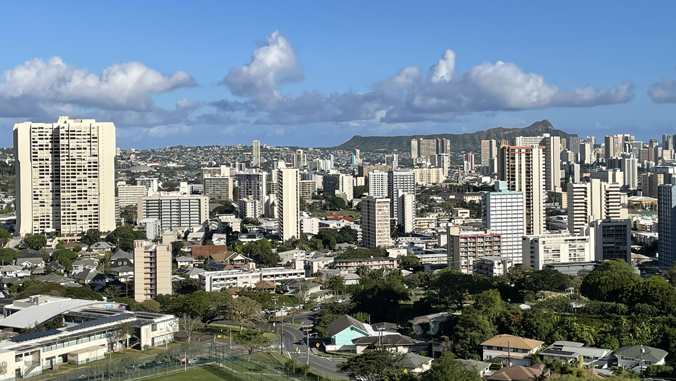
Regulatory costs account for more than half (58%) of the price of a new condo in Hawaiʻi and are the major contributing factor to the highest housing costs in the country, according to a new report by the University of Hawaiʻi Economic Research Organization (UHERO) released on March 4.
The median sale price of a new two-bedroom condo in Hawaiʻi is about $670,000, more than double the price in the average state, and regulatory costs comprise $387,000.
Regulatory costs refer to anything that raises production costs above the price of land, materials and labor. In essentially all new developments, developers are required to contribute to the upgrading of local infrastructure. For example, the developer may be asked to fund upgrades to local roads, sewers or electrical infrastructure in exchange for permit approval.
“This portion of regulatory costs is not entirely wasteful, because it generates needed infrastructure. However, putting the cost burden of infrastructure on developers, rather than funding infrastructure through general property taxes, significantly inflates the cost of housing production and effectively asks new homebuyers to bear the full costs of new infrastructure,” according to the report authored by UHERO Assistant Professor Justin Tyndall.
In addition to direct fees paid by the developers, regulatory costs can arise due to the extremely slow and complex procedures involved in getting housing permitted. Condominium construction in Hawaiʻi is intensely regulated compared to other states, requiring more layers of approval and risks of legal and political obstacles.
Multifamily projects: permits, codes, wait times
For multifamily projects approved in the state over the past five years, the median wait time for a permit was more than 400 days. Hawaiʻi also has strict zoning and building codes compared to other states, and the complexity of regulation means that few firms are large enough and have the needed influence to successfully complete large multifamily projects. This may lead to an uncompetitive market.
“Regulations can create important community benefits such as environmental preservation and affordable housing units. However, it is worth weighing these benefits against the huge burden of high housing costs,” according to the report. “In a market with lower regulatory costs, developers would have strong financial incentives to provide much more multifamily housing than they currently do. More housing production would lower housing costs, which could have significant benefits for overall housing affordability in the state.”
Priced out of Hawaiʻi
The other factors besides regulatory costs are the high cost of land and the high cost of construction materials and labor, both the highest in the nation, according to UHERO.
“Condominiums can provide a point of entry into the housing market for new households,” Tyndall wrote. “Without a flow of condominiums, households compete for what scarce housing is available, pushing up prices in the condominium and single-family markets alike. Meeting Hawaiʻi’s housing needs requires a significant amount of new housing supply, which could be realistically provided through multifamily housing development.”
Read the entire report on UHERO’s website.
UHERO is housed in UH Mānoa’s College of Social Sciences.

